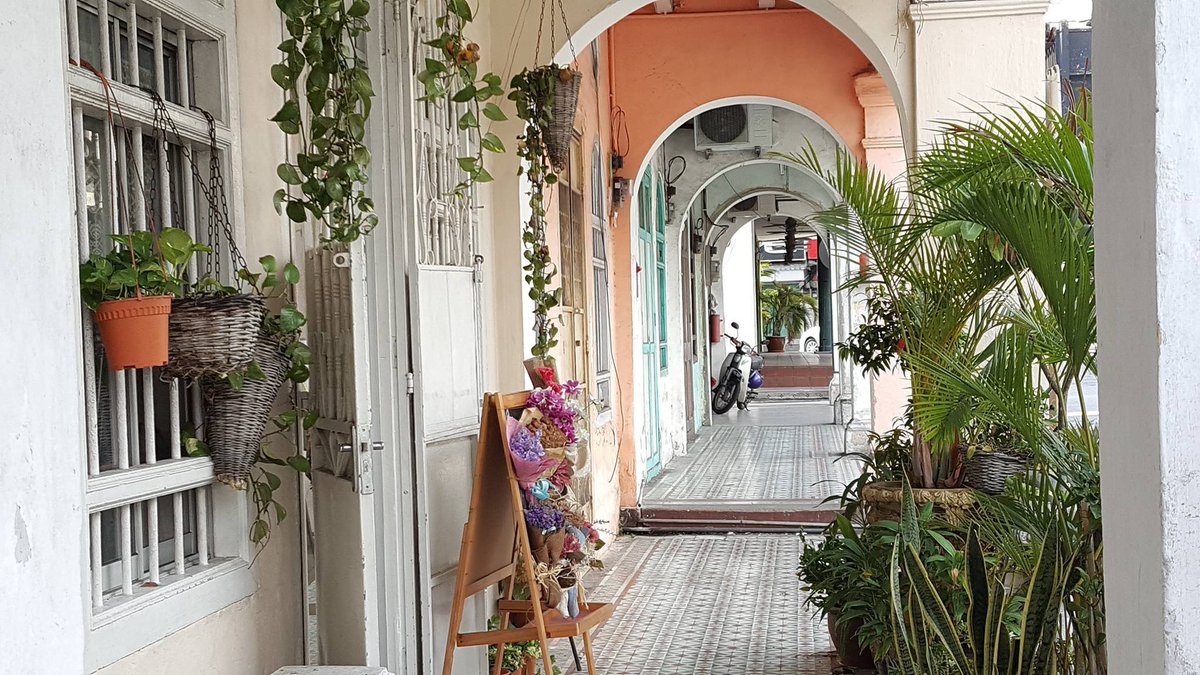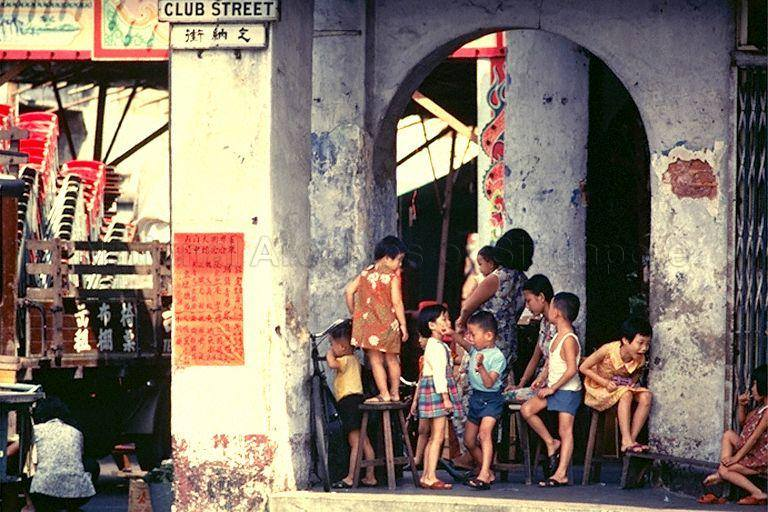Kaki lima is an example of climate-adapted urbanism in Malaysia. The five-foot walkways in front of shophouses is a public realm found in many heritage towns, designed to shelter pedestrians from the tropical sun & rain. It also serves various social and economic functions (1/n).
It is also a space for the neighbourhood children to play while their parents keep a close eye on kids. The adults would also pull out their chairs and catch up with one another on the latest news (National Archives of Singapore, 1972) (2/n).
The five foot ways were also spaces where informal economies could operate - catering to the basic needs of the neighbourhood; be it food from the hawker stalls or a quick haircut from the hairdresser (National Archives of Singapore, 1950-60) (3/n).
Not forgetting the beautiful variety of tessellated tiles that you may still come across on the five foot walkways today (4/n)
The five foot way is a good example of how design could benefit a local community. It was a malleable and lively space, where its form and function could be adapted to local needs and their aspirations. That was probably peak democratic and multicultural place-making (5/n).
Since you& #39;ve got this far, you might be interested to know that there is a board game that was inspired by five foot way of Penang. You may check it out here: https://www.facebook.com/KakiLimaCardGame/">https://www.facebook.com/KakiLimaC... (6/6).

 Read on Twitter
Read on Twitter






